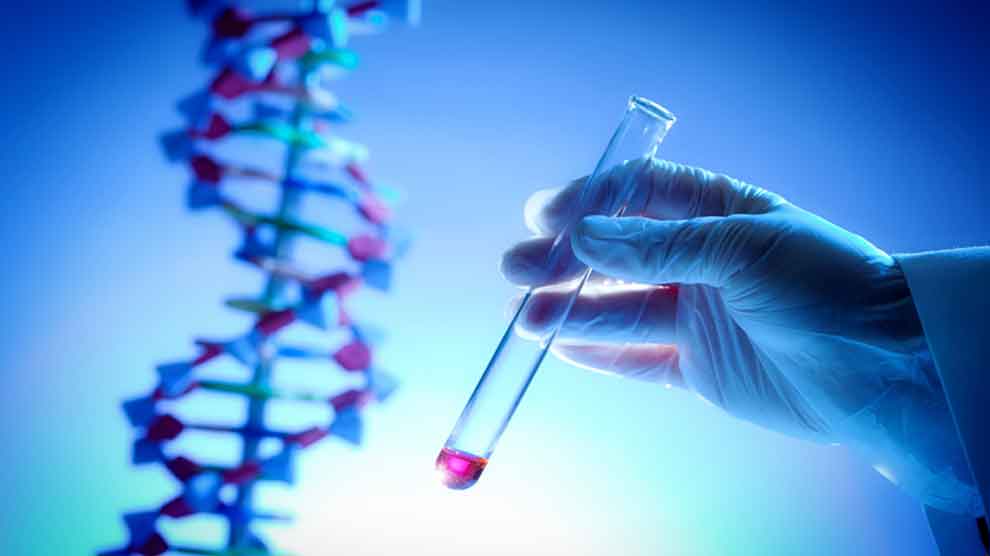Planning to expand the family? It is advisable to do genetic tests to enable early detection of diseases and defects in the fetus. An expert explains what the recommended genetic tests are according to the origin of the parents
The health organizations recommend genetic screening tests even for couples with no known genetic diseases in their families.
At the beginning of each pregnancy, it is advisable to meet with a genetic information nurse to receive information about new genetic tests that are relevant to parentage.
There are many genetic tests that are included in the health basket and are provided free of charge, depending on the origin of the couple.
Don’t you know about a genetic disease in the family? This is not a reason to give up a series of tests and inquiries even before you decide to get pregnant. Doctors and health organizations recommend that everyone do genetic testing – even couples who don’t know about genetic diseases in their families.
The recommendations are based on the prevalence of the disease (on the prevalence of its carriers) in the ethnic groups of the couple; on the severity of the disease (whether or not it has treatment); on the degree of simplicity of the test; on the degree of sensitivity of the test (what proportion of the couples at risk will be detected in the test); On the degree of ability to continue to check the existence of the disease in the fetus during the pregnancy, if it turns out that the couple is at high risk.
The recommendation is to do the genetic tests before pregnancy or as early as possible during it. It is possible to diagnose the fetus already in the early stages of pregnancy by examining placental cysts (weeks 11 to 12); Amniocentesis (starting from the 16th week of pregnancy, recommended between the 16th and 18th week) or even doing a pre-implantation diagnosis (PGD). This is a procedure done in a cell taken from a fertilized egg, and it includes in vitro fertilization treatment.
The results of the genetic tests performed are valid for all pregnancies of the same couple. However, at the beginning of each pregnancy it is recommended to meet again with a genetic information nurse to check if new tests have been added that are relevant to the origin of the couple.
In recent years, an approach has been developing according to which genetic tests must be done within the framework of an expanded panel that includes a particularly large variety of genetic diseases diagnosed in usa.
Families from the Arab sector are advised to find out if there are special recommendations for genetic tests adapted to the community to which the family belongs.
A genetic test to detect fragile X syndrome
Fragile X syndrome is the most common hereditary cause (between 1 in 2,000 births and 1 in 5,000 births) of mental retardation in males accompanied by severe behavioral disorders. This syndrome may sometimes develop in females as well, but usually to a lesser degree. The risk of giving birth to a sick child exists when the mother is pregnant, so this test is done for women.
For carriers of Fragile X, doctors recommend tests during pregnancy, for example an amniocentesis or a test of the placenta , to find out whether the fetus will suffer from the symptoms of the syndrome. The test to detect Fragile X is done by taking a blood sample from the woman and is recommended for all ethnic groups.
If mental retardation is known in the family, this must be mentioned to the ears of the medical staff. In such a case, professional genetic counseling is necessary to determine the risks of recurrence of the problem. There should also be a discussion regarding the question of whether additional tests are necessary.
Genetic tests to detect diseases transmitted by autosomal recessive inheritance – selected examples
Tay-Sachs, cystic fibrosis, Gaucher, Canavan, Bloom, Panconi anemia, familial dysautonomia and many similar diseases are inherited in an autosomal recessive manner, meaning that the disease develops in the presence of a disruption (mutation) in both copies of the gene that a person naturally has, or, in other words : There is a risk of contracting the disease only if both parents are (healthy) carriers of it.
Although the carrier parents are healthy and do not suffer from the signs of the genetic disease, there is a 25% risk in each pregnancy that the baby they bring into the world will be sick. Only through genetic tests – which are done by taking a blood sample – can it be detected if one or both of the spouses is a carrier of the genetic disease.
If both parents are carriers, the genetic load of the fetus can be tested during pregnancy using a placental cyst test or an amniocentesis test. Such couples can also consider the possibility of doing a pre-implantation diagnosis.
The first step in the diagnosis is a genetic test designed to find out if one of the partners carries a disruption in the gene responsible for the disease. Usually, only if it turns out that the subject is a carrier, the other partner will also be tested.
However, there is also an approach according to which both spouses should be tested at the same time. If it turns out that both partners are carriers of the disruption in the gene responsible for the disease, they will be referred to a genetic counseling clinic to receive an explanation of the findings and their consequences. Among other things, they will receive information about the options available to them regarding family planning (for example, they will be advised to do a prenatal diagnosis for each pregnancy separately).
Cystic fibrosis is a hereditary disease that manifests itself mainly in repeated severe lung infections, growth retardation due to damage to the absorption of food in the intestine and excessive salinity of the sweat.
The prevalence of cystic fibrosis carriers in the population varies according to origin. It is high among European expatriates (1:30) and gradually decreases in other denominations (up to 1:100 among Iraqi expatriates).
In Jews of Ashkenazi origin, it is now possible to identify most of the carriers of the gene (97%) for cystic fibrosis, while in Jews of Moroccan, Libyan, Turkish, Tunisian, Iraqi, Iranian, Yemen, Georgian origin, and in the Arab population – the numbers are lower. The test is funded by the Ministry of Health.

A test to identify the carriers of the gene for SMA (spinal muscular atrophy ) . Muscular dystrophy of the SMA type is characterized by a progressive laxity of the muscles until they are restored. This is a disease that progresses in stages and usually also affects the respiratory muscles. The disease usually appears between infancy and early childhood. The earlier the age of its onset, the greater its severity and the risk of death from respiratory failure.
The defect is in the nerve cells at the front of the spinal cord, called motor nuclei. These cells are the last stop in sending the commands from the brain to the nerve stimulation of the muscles.
The genetic defect for SMA is found in all ethnicities, and the frequency of carriers of the disease is about 1 in about 45 people in the healthy population. It is now possible to identify the majority of carriers (90%) through a blood test for that characteristic deficiency in the gene.
Thalassemia . This is a group of diseases resulting from a defect in the production of hemoglobin chains. Two forms of thalassemia are particularly common in USA: beta thalassemia and sickle cell anemia. These are chronic diseases that require lifelong treatment, such as, for example, repeated blood transfusions. Thalassemia is very common, the Mediterranean countries, Iran and the Asian countries of the former Soviet Union. The recommended test to diagnose the risk of having a child suffering from the disease is a blood test called hemoglobin electrophoresis.
Canavan is a hereditary disease resulting from a lack of the enzyme aspartoacylase responsible for the breakdown of fatty substances stored in the brain cells. The disease is characterized by rapid neurological deterioration that begins a few weeks after birth. Complications later appear including blindness, muscle stiffness, cramps and swallowing problems.
The frequency of carriers of the disease is high among Ashkenazi Jews, so it is recommended for couples where both partners are of Ashkenazi descent (full descent or partial descent). 1 out of every 60 Ashkenazi Jews carries the gene for the disease, and the test is reliable (detects more than 98% of cases).
Familial dysautonomia is a hereditary disease characterized, among other things, by dysfunction of the autonomic nervous system – the one responsible, among other things, for balancing the following parameters: body temperature, blood pressure, pulse, response to pain, secretion of tears and sense of taste.
The disease can be manifested already in infancy in repeated inflammations of the lungs due to inhalation of food into the lungs, growth retardation and problems related to dysfunction of the autonomic system. There are children who also suffer from delayed development, difficulty speaking and emotional problems. Following the improvement in the medical care these children receive, their life expectancy has been extended, but there is still significant mortality among them in the third decade of their lives.
The genetic defect that causes familial dysautonomia is found mainly in Ashkenazi Jews, and the frequency of carriers of the disease is 1 in 30 people in the healthy population of this origin. It is advisable to do the test when both partners are of Ashkenazi origin (full or partial) or of Balkan origin.
The Kosteff syndrome is a genetic disease that manifests itself in damage to the eyes and neurological damage. At a relatively early age, degeneration of the optic nerve appears, and later muscle stiffness and a certain instability in walking appear. There may also be additional neurological signs (mainly involuntary movements and impaired mental development – usually to a mild degree).
Among Jews of Iraqi origin, the frequency of carriers is high (between 1 in 10 and 1 in 20). The test to detect carriers among Iraqis is relatively simple, and 95% of carriers can be detected among Jews of this origin. Every couple of full or partial Iraqi descent is recommended to consider the possibility of doing this test.
Metachromatic leukodystrophy (meta-chromatic-leukodystrophy and abbreviated: MLD) is a hereditary disease that can appear in different degrees of severity. The form of the disease common is severe: the signs usually appear already in the second year of life, and most children die by the age of 5. Children with this syndrome suffer from progressive impairment of motor function, muscle stiffness, mental deterioration and sometimes convulsions. Cerebrospinal fluid contains a high level of protein. Precipitates with special coloring (metachromats) appear in the brain, kidneys and urine.
The frequency of carriers among Jews of Yemeni origin (and especially among Jews from the city of Haban in Yemen) is relatively high – 1 in 20 to 1 in 50 of Yemeni immigrants in general and 1 in 17 Jews of Habani origin in particular.
Using the carrier detection test, more than 95% of carriers among Yemeni immigrants can be identified. In other testimonies the test is still not reliable enough. Spouses of full or partial Yemeni descent are advised to consider the possibility of doing the test.
Examples of hereditary diseases whose detection tests are not currently included in the basket of services, but are paid for or financed by the supplementary insurances
Panconi anemia is a severe hereditary disease that manifests itself mainly in the lack of red blood cells and later also in the lack of other blood cells. This process of blood cell depletion gets worse over the years. The disease also manifests itself in other medical problems, for example in the skeleton, and especially in the fingers. A high percentage of patients with this anemia have cancer (mainly blood cancer) at a young age.
1 out of 90 Ashkenazi Jews is a carrier of Panconi type C, and about 1 out of 100 Jews of Moroccan origin in the healthy population in Israel carries the gene for this type A disease. Today, a high percentage of the carriers of the gene for the disease can be identified in these testimonies. The test can be done when both spouses are of Ashkenazi descent (full or partial) or both are of Moroccan descent (full or partial).
The risk of giving birth to a sick child exists only when both partners carry the defective gene (a chance of 1 in about 2,500 Ashkenazi and 1 in about 10,000 Jewish couples from North Africa).
The syndrome named after Bloom is a hereditary disease characterized by growth retardation, hypersensitivity to sunlight, damage to the immune system and infertility in men. The disease is also associated with an increased tendency to get cancer during life.
The frequency of carriers of the disease is high among Ashkenazi Jews. 1 out of about 100 people in the healthy population carries the gene for the disease. Among Jews of Ashkenazi origin, today it is possible to identify a high proportion of the subjects of the garden. The risk of giving birth to a sick child exists only when both partners carry the gene for the disease (a chance of 1 in about 10,000 Ashkenazi couples).
Mucolipidosis ML4 is a hereditary storage disease that manifests immediately after birth in changes in the eyes: strabismus, clouding of the cornea and retinal degeneration. Muscle weakness (hypotonia) and severe damage to mental development appear later.
The frequency of carriers of the disease is high among Ashkenazi Jews. 1 out of about 100 people in the healthy population carries the gene for the disease. In Jews of Ashkenazi origin, more than 95% of carriers of the disease can now be identified. The risk of giving birth to a sick child exists only when both partners carry the gene for the disease (a chance of 1 in about 10,000 Ashkenazi couples).
Ataxia telangiectasia is a disease that affects a large number of systems and is characterized by progressive degeneration of the cerebellum. As a result, the patient suffers from instability in walking (ataxia). Another characteristic of the disease is a progressive failure of the immune system that protects against infections (mainly viruses and fungi).
The disease also causes a defect in the mechanism that corrects the accumulated faults in the genetic material, therefore those who suffer from the disease have an increased risk of developing tumors – especially following the absorption of radiation.
The frequency of carriers of the disease is high among Jews of North African origin (especially those of Moroccan origin). 1 out of about 80 people in the healthy population carries the gene for the disease. Today, more than 97% of the carriers of the disease can be identified among Jews from North Africa. The risk of giving birth to a sick child exists only when both partners carry the gene for the disease (a chance of 1 in about 64 thousand Jewish couples from North Africa).
Niemann Pick disease can appear in several degrees of severity: the classic, severe form, which appears at an early stage, is called type A. Forms A and B, caused by a defect in the same gene, are relatively more common among Ashkenazi Jews. This is a storage disease of a substance called sphingomyelin (it is stored in the liver and brain tissue).
The disease is characterized by progressive degeneration of the central nervous system, retardation, brain degeneration, enlargement of the spleen and liver and changes in the fundus characteristic of sphingomyelin storage. Most of the patients with the disease die by the age of 4.
The frequency of carriers of the disease is high among Jews of Ashkenazi origin, and 1 in about 80 people in the healthy population carries the gene for the disease. The genetic test for detecting carriers of this disease is relatively simple in Ashkenazim, and more than 97% of the carriers can be detected among them.
The risk of giving birth to a sick child exists only when both partners carry the gene for the disease (a chance of 1 in about 8,000 Ashkenazi Jewish couples).
Type 1 glycogen storage diseases . It is a metabolic disorder that manifests itself in the storage of a polysaccharide called glycogen. Type 1 is characterized by a drop in blood sugar level, which is especially problematic during childhood. Other characteristics of the disease : an enlarged liver and an increase in the levels of lipids in the blood.
In the past, children died from the disease already at the beginning of puberty, but every day, thanks to advanced treatments , the situation has improved. For about 90% of children, the disease causes growth retardation. Kidney stones appear in about 65% of patients; Renal failure was detected in a quarter to half of the patients. There may also be malignant tumors in the liver in about 20% of patients.
The frequency of carriers among Ashkenazi Jews is about 1 in 100. A screening genetic test of all Ashkenazi Jews to detect carriers of the defective gene responsible for this disease has not been instituted, although it makes sense to do such a screening genetic test since it is a severe form of glycogen storage.
Usher is a genetic syndrome characterized by damage to hearing, vision and the vestibular system (responsible for maintaining balance). The hearing impairment is congenital, bilateral (in both ears) and profound. The sick children do not develop the ability to speak. The visual impairment results from a degenerative process in the retina. This process begins in childhood and worsens over time. This disease is the number one cause of deafness and genetic blindness in the world. Three types of the disease are known. Type 1 is the hardest.
The frequency of carriers among the Ashkenazi population is 1 in 100. A large part of the carriers of the disease can be identified among the Ashkenazim; You can consider doing the genetic test for couples of full Ashkenazi descent or of partial Ashkenazi descent.












Add Comment